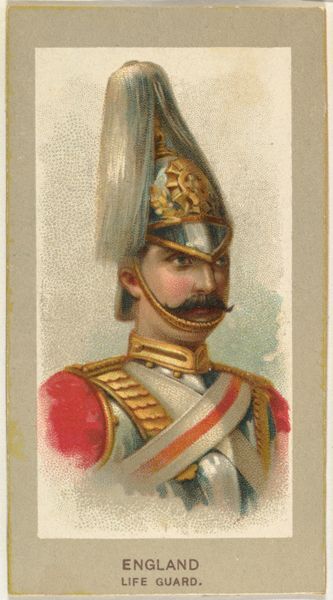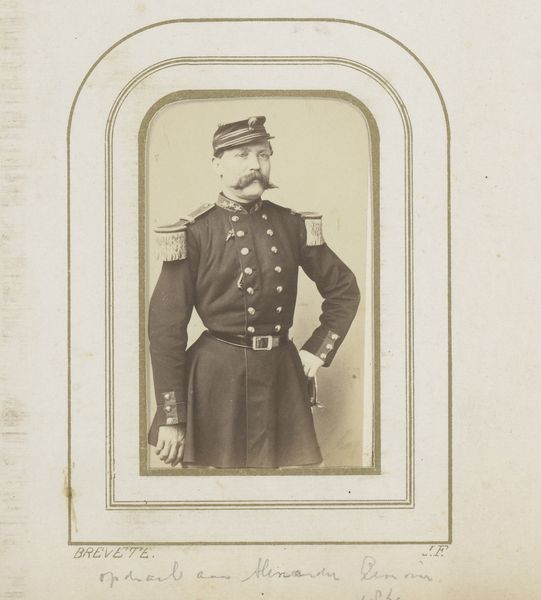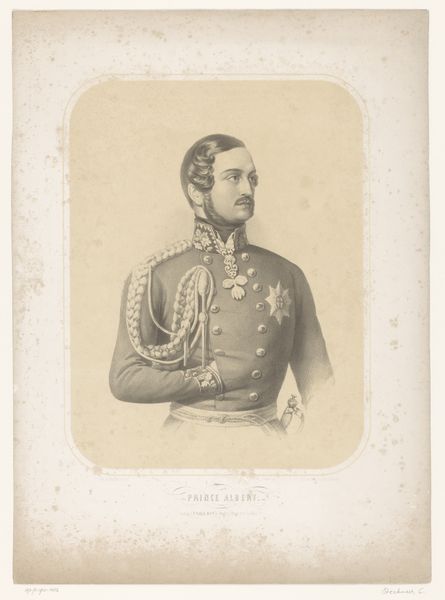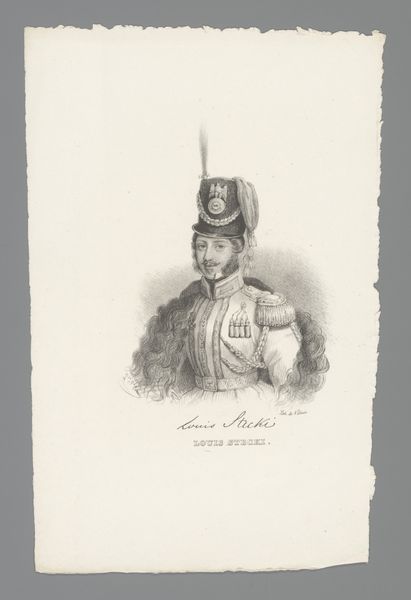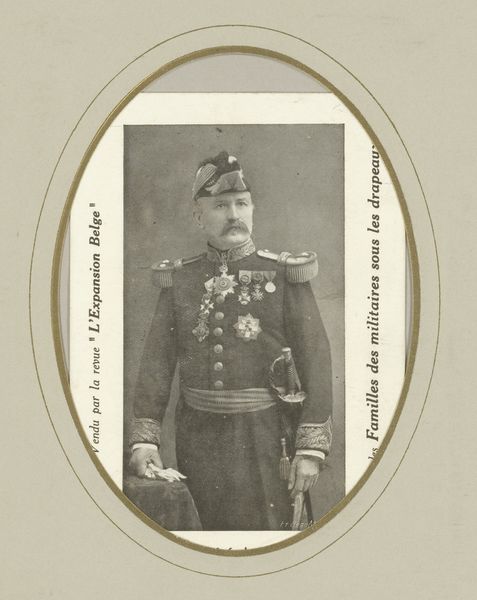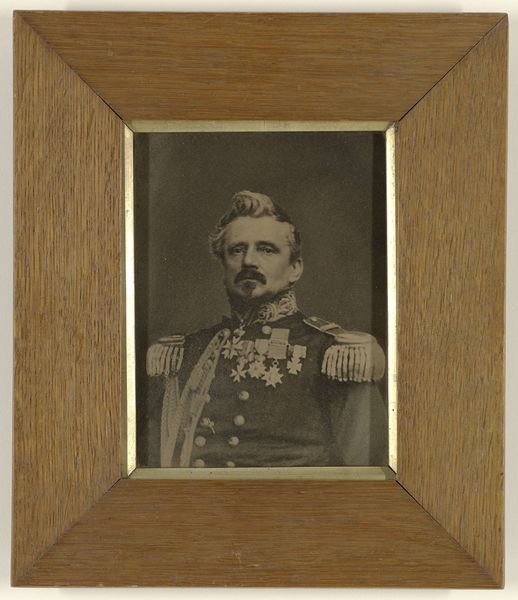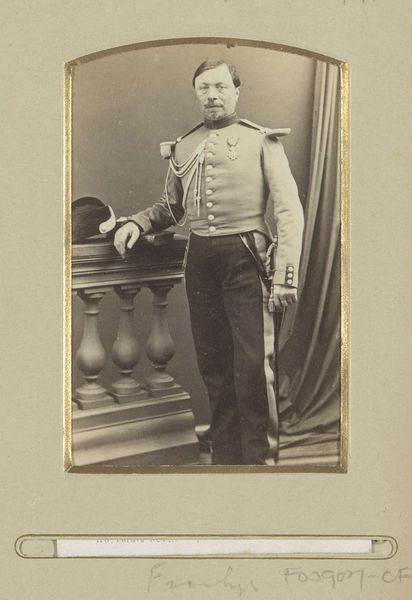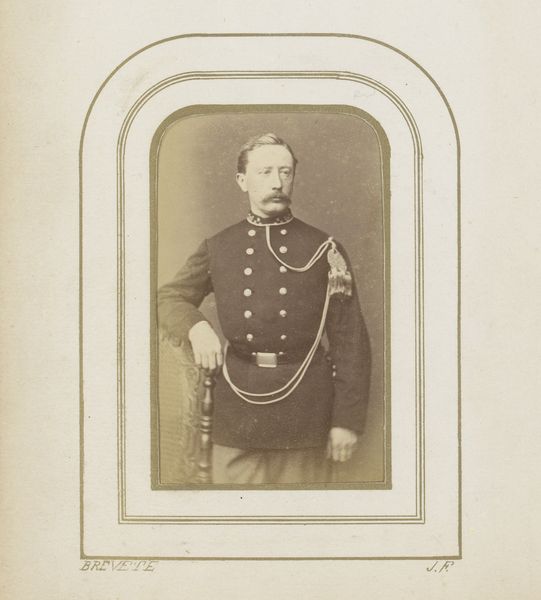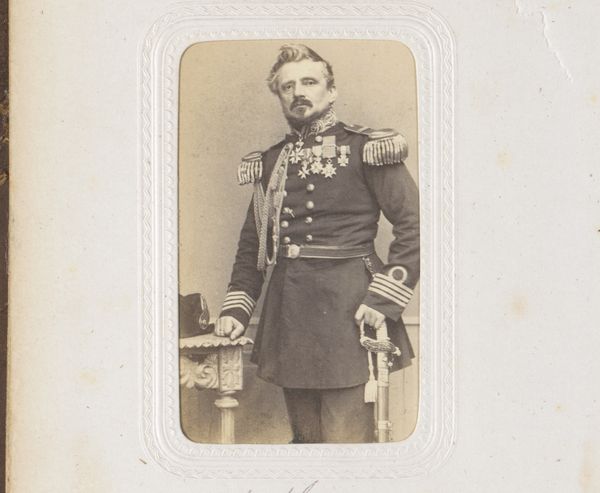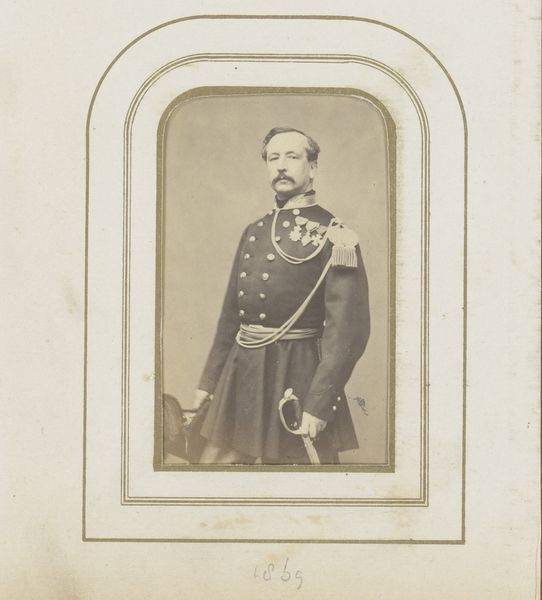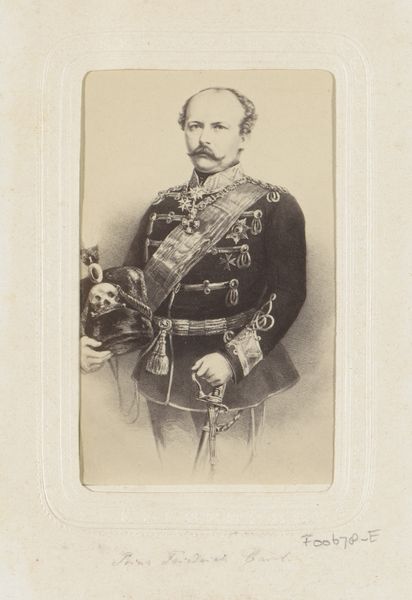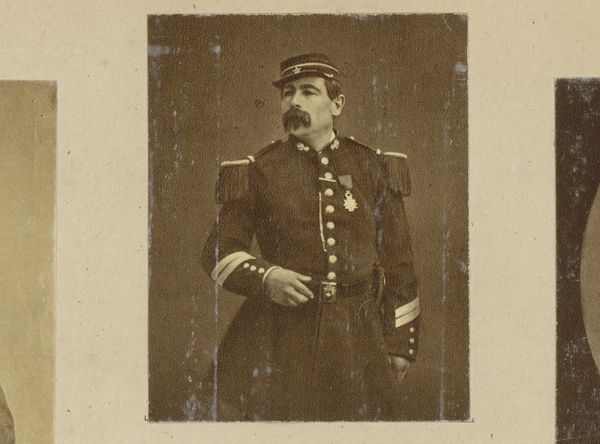
silver, print, photography, watercolor
#
portrait
#
16_19th-century
#
silver
# print
#
photography
#
oil painting
#
watercolor
#
france
#
men
#
painting painterly
Dimensions: 8.7 × 5.4 cm (image/paper); 10.4 × 6 cm (mount)
Copyright: Public Domain
Editor: This is a photograph from the 1860s by Mayer and Pierson, a portrait of Napoleon III. The silver print is tinted with watercolor, which gives it an almost dreamlike quality, a softened grandeur. What symbols strike you as most important in this piece? Curator: Immediately, I see the echoes of past empires rendered through carefully constructed details of clothing and posture. Look at how the sash bisects the image – a stark reminder of both power and the fragility of the body politic, itself often divided. Does that pink suggest something to you? Is that power embodied, or is it on the verge of bursting? Editor: Bursting? That's an interesting way to put it. I see a more confident pose, suggesting stability. Curator: But consider the context: France still reeling from revolution, searching for an identity in this "modern" age. Even the uniform carries this ambivalence; its colours simultaneously evoke military might and the fashionable drawing rooms of Paris. Can you almost taste the powdered wig trying to burst from beneath that silly hat? How might such visual conflicts betray an inner psychological landscape? Editor: So you're seeing a sort of internal conflict reflected in the outward symbols of power? Curator: Precisely! Photography, newly democratized, capturing an Emperor struggling to reconcile old traditions with a yearning for new legitimacy. Do you see now the cultural memory embedded in every thread, every brushstroke? Editor: I do, yes. It makes the portrait feel less like a simple record and more like a commentary. Curator: A perfect encapsulation of an era on the brink, wouldn't you say? And a wonderful study of visual encoding that resonates even now.
Comments
No comments
Be the first to comment and join the conversation on the ultimate creative platform.
